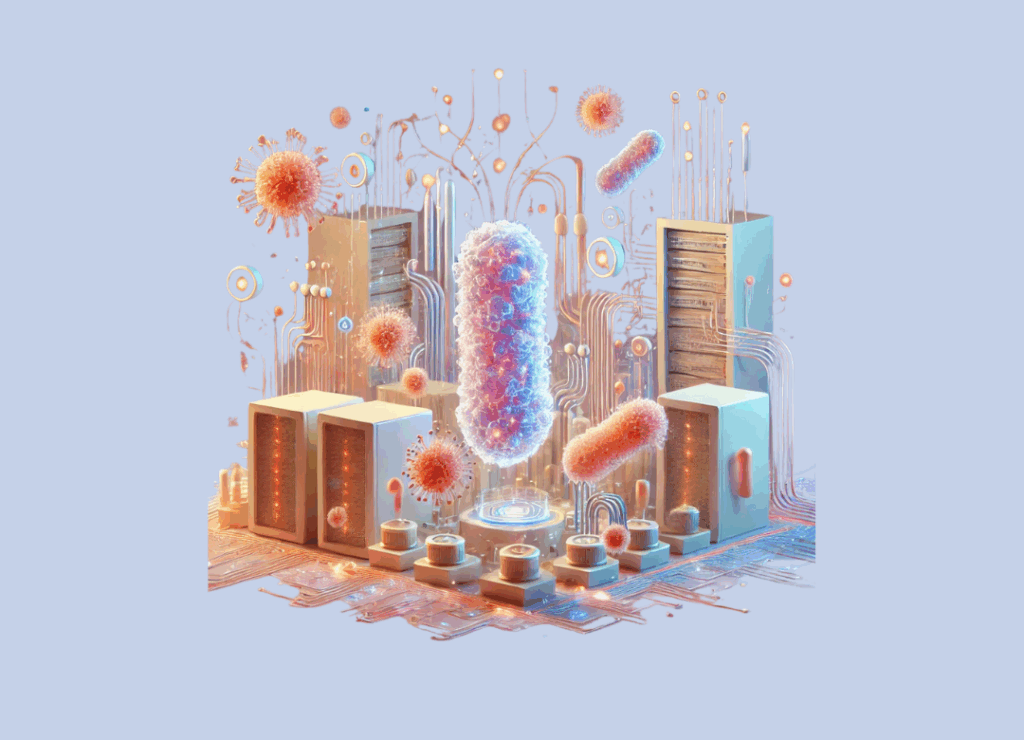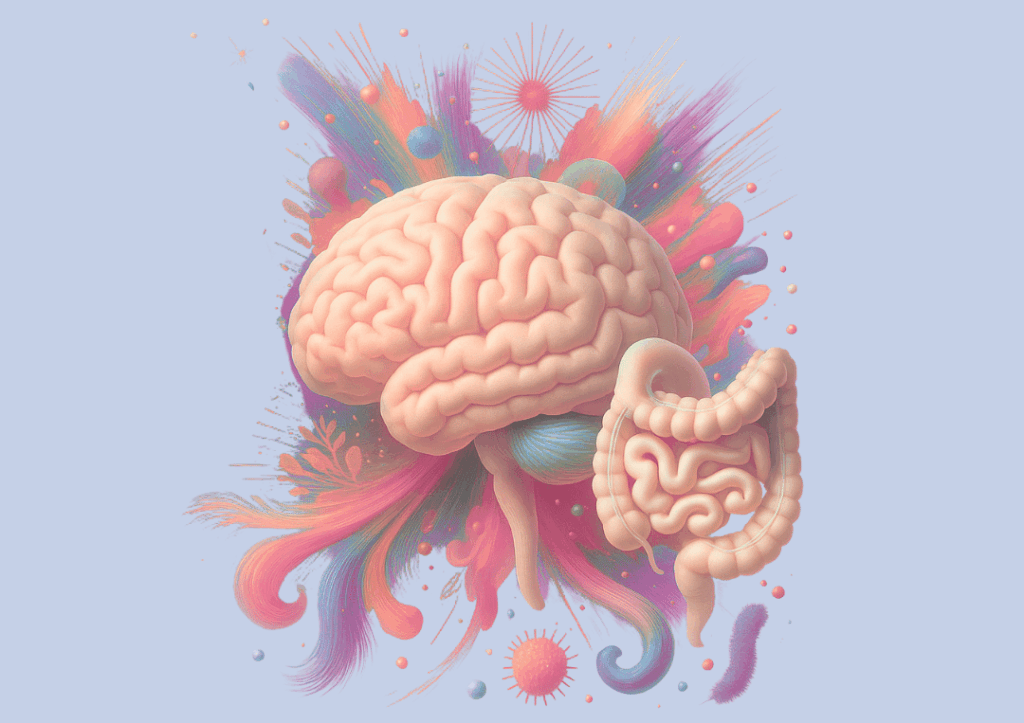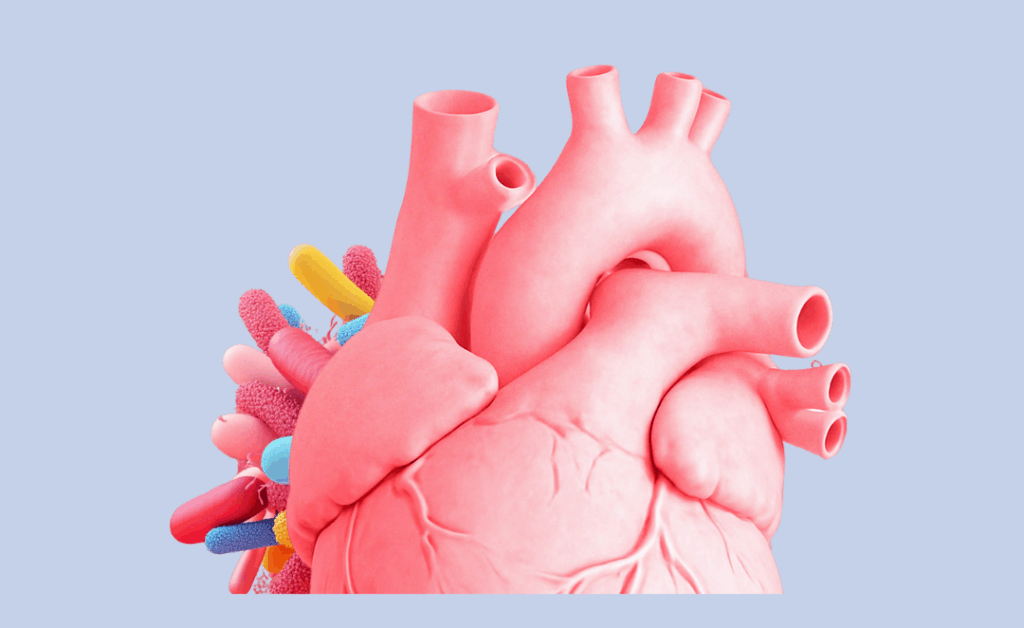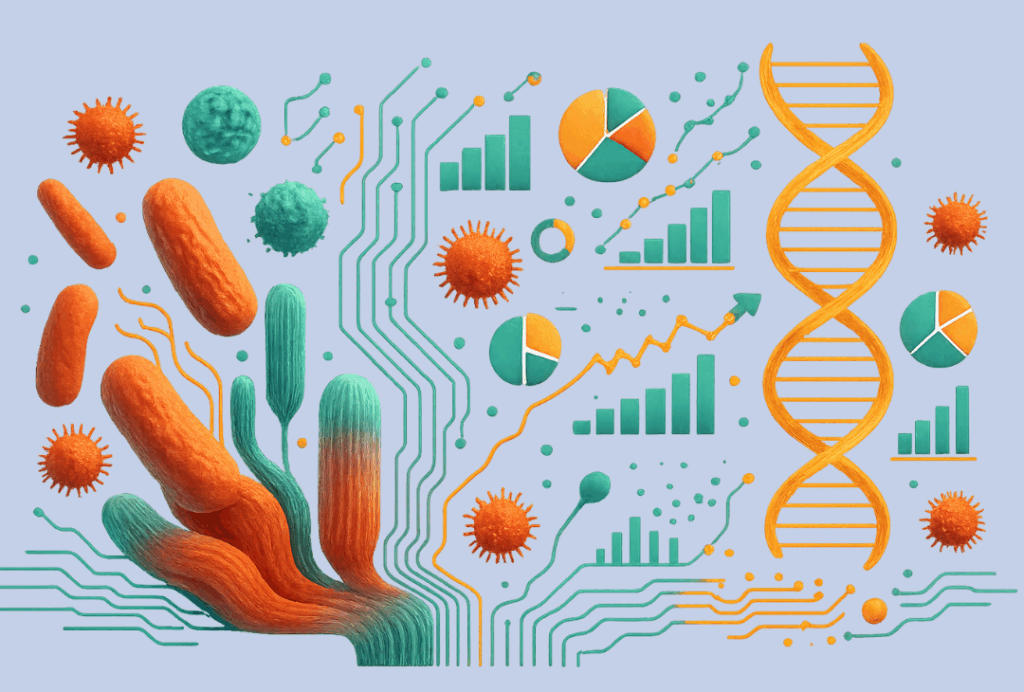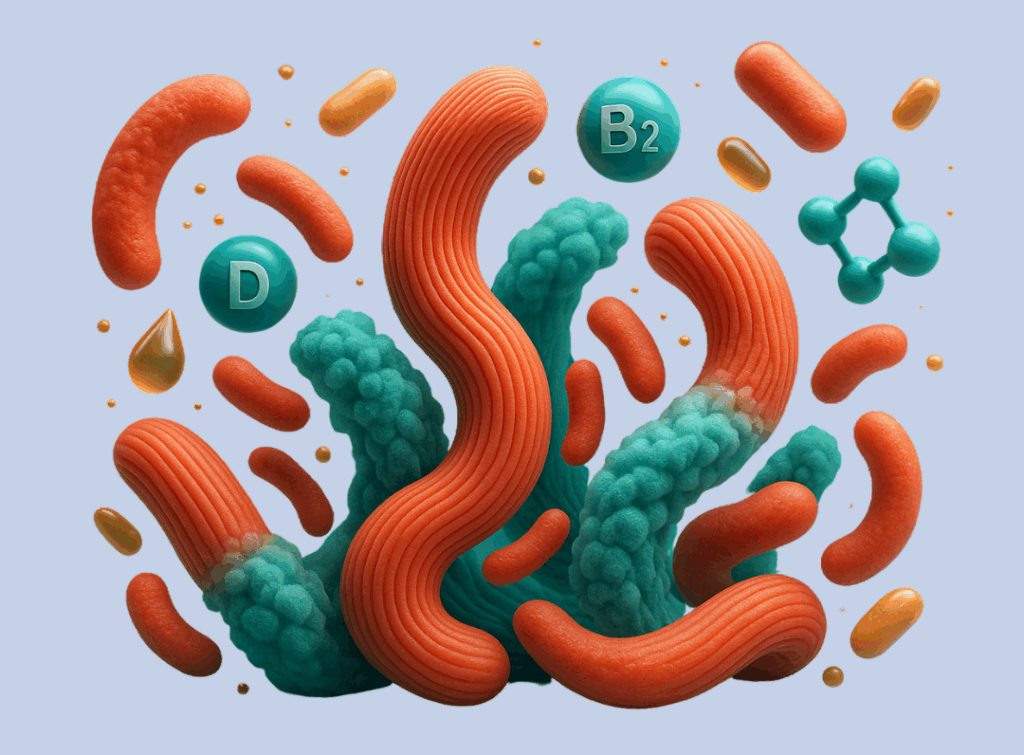Article Overview
Authors: Belén Serrano-Antón, Francisco Rodríguez-Ventura, Pere Colomer-Vidal, Riccardo Aiese Cigliano, Clemente F. Arias, Federica Bertocchini
Affiliations:
- Centro de Investigaciones Biológicas Margarita Salas (CSIC), Madrid, Spain
- FlowReserve Labs SL, Santiago de Compostela, Spain
- Group of Nonlinear Physics, University of Santiago de Compostela, Santiago de Compostela, Spain
- Grupo Interdisciplinar de Sistemas Complejos de Madrid (GISC), Madrid, Spain
- Sequentia Biotech SL, Barcelona, Spain
Publication journal: PLOS ONE
Date of publication: February 8, 2023
Link: https://doi.org/10.1371/journal.pone.0280391
Virtual microbiomes reveal how data gaps and flawed assumptions distort microbial research
In recent years, microbiomes have emerged as a central focus in disciplines ranging from personalized medicine to agriculture, wastewater treatment, and even plastic degradation. However, while the ambition to harness microbial communities for real-world applications is growing rapidly, an uncomfortable truth is emerging: our understanding of these ecosystems is only as accurate as the tools we use to study them, and those tools may be deeply flawed.
A recent study, powered by Sequentia Biotech’s advanced bioinformatics technologies, provides a comprehensive examination of the foundations of microbiome research. The work introduces virtual microbiomes—in silico bacterial communities with known compositions and ecological structures—used as testbeds to evaluate the reliability of standard sequencing methods, such as amplicon (16S rRNA) and whole-genome shotgun (WGS) sequencing. By confronting these tools with a “truth set,” the researchers discovered troubling inconsistencies that call into question many current assumptions in metagenomics.
Virtual communities, real-world implications
The goal was simple yet powerful: simulate microbial environments such as human guts, insect digestive tracts, or soil systems, and test whether existing sequencing techniques could accurately characterize them. These virtual models made it possible to measure precisely where and how sequencing methods failed, particularly under the constraint of incomplete genomic databases, a reality for many less-studied ecosystems.
The findings were stark. Not only did 16S and WGS yield highly divergent results when applied to the same virtual samples, but even the apparent overlaps between the methods were often composed of false positives—bacterial species that weren’t actually present. In other words, both tools frequently “agreed,” but agreed on the wrong answer.
From Simulation to the Real World: The Case of Galleria mellonella
To see how these discrepancies play out in reality, the researchers turned to Galleria mellonella, a species of moth larva known for its surprising ability to consume and degrade plastics like polyethylene and polystyrene. As part of the experiment, larvae were fed plastics, and their microbiomes across various tissues, including the gut, anterior segment, and silk glands, were analyzed using both 16S and WGS techniques.
The results were again disconcerting. Each sequencing method told a completely different story. Depending on which method was used, different bacterial species appeared to increase or decrease in response to plastic exposure. In many cases, bacteria identified as “important responders” by one method were entirely absent according to the other. There was no coherent pattern, no reliable list of microbes that could be confidently said to shift in any predictable way.
Flawed Assumptions, Misleading Conclusions
This has profound implications. A central assumption in microbiome research is that if a microbial species becomes more or less abundant after a treatment, then that change is biologically meaningful. But if the foundational data is unstable and method-dependent, then those conclusions may be flawed.
Even the resolution of data—something often touted as a benefit of WGS over 16S—turns out to be a double-edged sword. Higher resolution can increase confidence in some results. Still, it also increases the chance of overfitting: seeing details that aren’t really there, or making taxonomic calls that can’t be substantiated by the available evidence. A finer lens doesn’t help if the picture itself is incomplete.
For microbiome research to be truly useful and reliable, we need to focus on collecting significantly more genomic information and developing more effective methods for interpreting it. When studying life forms we can’t even see, we can’t let imperfect tools shape the story. What’s needed now isn’t just more data—it’s a little more honesty about how much we still don’t know.
In science, tools shape the questions we ask—and sometimes, they shape the answers we want to believe.
Reference:
Belén Serrano-Antón, Rodríguez-Ventura, F., Pere Colomer-Vidal, Cigliano, R. A., Arias, C. F., & Federica Bertocchini. (2023). The virtual microbiome: A computational framework to evaluate microbiome analyses. PLoS ONE, 18(2), e0280391–e0280391.
